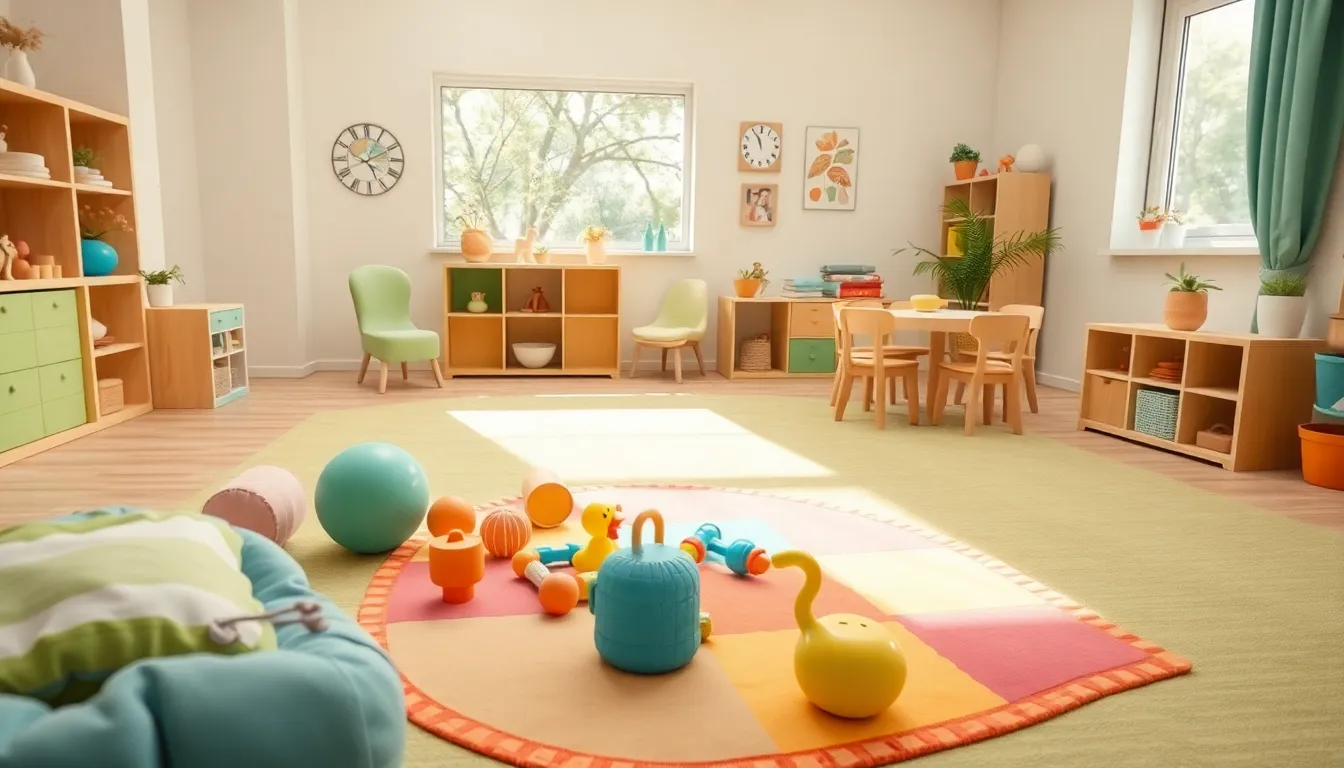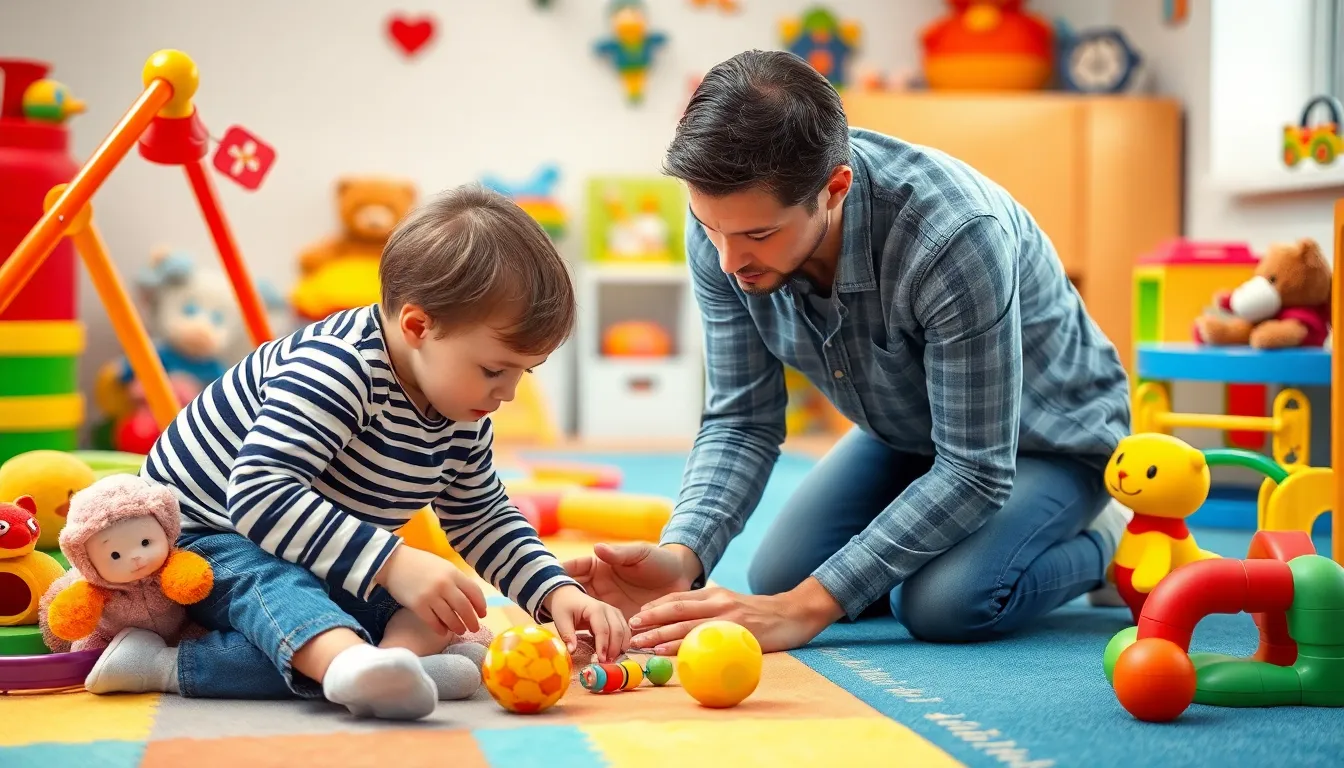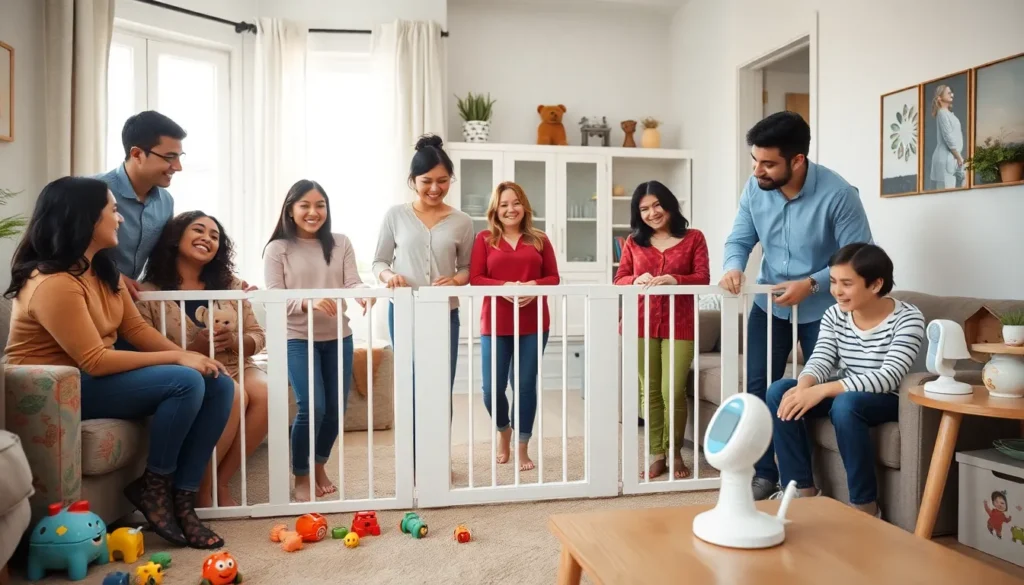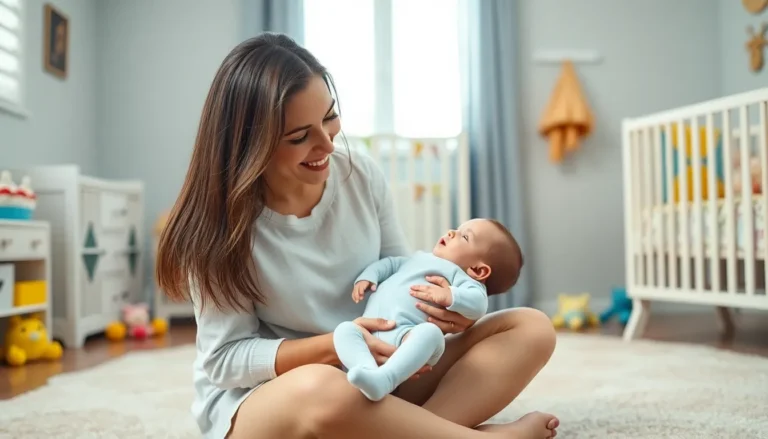Table of Contents
ToggleWhen it comes to baby safety, parents often find themselves in a world filled with more worries than a cat in a room full of rocking chairs. From the moment they bring their little bundle of joy home, it’s a whirlwind of baby-proofing, safety gear, and a constant vigilance that would put a hawk to shame. But fear not! With a sprinkle of knowledge and a dash of humor, navigating the maze of baby safety can be a lot less daunting.
Imagine transforming your home into a fortress of safety while still keeping your sanity intact. It’s not just about bubble-wrapping your baby; it’s about making smart choices that allow your little explorer to roam freely—without turning every corner into a potential adventure gone wrong. Dive into this guide and discover tips that’ll have you feeling like a superhero in a world where baby-proofing is the ultimate mission.
Understanding Baby Safety
Baby safety is a priority for every parent. Ensuring a secure environment allows babies to explore without risks. Parents should conduct thorough assessments of their home, identifying potential hazards. Start by covering electrical outlets with safety plugs, which can prevent accidental shocks.
Using safety gates helps limit access to unsafe areas. Installing these gates at the top and bottom of stairs provides extra protection against falls. Additionally, securing heavy furniture to walls reduces the risk of tipping over and causing injuries.
Using proper car seats is crucial for traveling safely. Car seats must comply with safety standards and be adjusted to fit the child’s age and size. According to the American Academy of Pediatrics, infants should remain in rear-facing seats until at least two years old or until they exceed the seat’s weight limit.
Keeping small objects out of reach is vital for preventing choking hazards. Toys should be appropriate for the child’s age, avoiding items that can easily break or become small parts. Regularly checking toys for wear and tear helps maintain a safe play environment.
Educating caregivers on baby safety practices is essential. They should know the basics, including what to do in an emergency. Sharing this information with friends and family promotes a collective understanding of safety measures.
Creating a baby-safe home involves consistent efforts and vigilance. Regular checks for potential dangers enable parents to stay ahead of risks. Ultimately, a proactive approach leads to a more secure environment, allowing babies to thrive and discover their surroundings safely.
Common Hazards in Baby Environments


Babies often explore their surroundings, exposing them to various hazards. Identifying these dangers is crucial for ensuring their safety.
Choking Hazards
Small objects significantly increase the risk of choking. Toys, coins, and small household items should remain out of reach. Foods like grapes and popcorn can block airways, so ensuring proper food preparation is essential. Parents should also avoid leaving small items on surfaces accessible to babies. Regularly checking play areas for any objects that can cause choking helps maintain a safer environment.
Sharp Objects and Edges
Sharp objects pose considerable danger in a baby’s environment. Parents should store scissors, knives, and other sharp tools in secure locations. Furniture with sharp edges can also result in injuries, so using edge guards can help. Inspecting furniture for protruding screws or nails is necessary as these can also cause cuts. Creating a soft play area minimizes the risk of injury from accidental bumps.
Toxic Substances
Toxic substances present serious risks, making storage critical. Cleaning supplies and chemicals should remain in locked cabinets or high shelves. Many houseplants can be harmful if ingested, which necessitates identifying and removing them. Installing childproof locks on cabinets containing toxic items provides added safety. Regularly reviewing household products ensures that only baby-safe items remain accessible.
Essential Baby Safety Products
Creating a secure environment for babies involves choosing the right safety products. Below are essential items designed to enhance baby safety.
Baby Gates
Baby gates prevent access to hazardous areas like stairs or kitchens. Durable materials ensure long-lasting use, while adjustable sizes fit various openings. Some models feature easy-to-use mechanisms that allow for convenient access by adults. Selecting the correct height and style increases effectiveness against escapes. They also come in pressure-mounted or hardware-mounted options, accommodating different home layouts.
Safety Locks
Safety locks safeguard cabinets and drawers from curious little hands. Magnetic locks offer a discreet solution, keeping items out of reach while maintaining aesthetics. Installing adhesive or sliding locks provides an additional layer of security. These devices target common hazards such as cleaning supplies and sharp utensils. Parents should regularly check these locks to ensure consistent functionality.
Corner Protectors
Corner protectors cushion sharp edges on furniture. Soft materials like foam or rubber absorb impact, reducing injury risk while babies explore. Installing these protectors is straightforward, often involving adhesive backing for quick application. Regularly examining these items for wear extends their protective benefits. They effectively safeguard little ones from bumps and bruises, contributing to a safer environment.
Creating a Safe Home Environment
A safe home environment is crucial for babies’ well-being. Prioritizing safety measures helps caregivers feel confident in allowing exploration.
Room-by-Room Safety Checklist
Living rooms require safety gates to limit access to stairs. Keep small items off the floor to prevent choking hazards. Secure heavy furniture to walls to avoid tipping. In kitchens, install safety locks on cabinets containing harmful substances. Store sharp objects out of reach and ensure the stove is childproofed. Bedrooms should include corner protectors on furniture. Keep cribs clear of pillows and toys to reduce suffocation risks. Bathrooms require non-slip mats and secured toilet lids. Finally, check garages for toxic substances and tools that may pose risks.
Baby-Proofing Tips
Begin by assessing potential hazards in each room. Use safety gates effectively to block off areas like staircases. Corner protectors cushion sharp edges and minimize injuries. Safety locks prevent access to potentially dangerous items in cabinets and drawers. Electrical outlets need childproof covers to prevent shocks. Keep cords from blinds and electrical items out of reach to avoid entanglement. Regularly inspect baby-proofing measures to ensure effectiveness. Additionally, educate caregivers regularly on updated safety practices.
Creating a safe environment for babies is essential for their healthy development. By being proactive and informed parents can significantly reduce risks and create spaces where their little ones can explore with confidence. Regular assessments and the right safety products play a crucial role in this effort.
It’s not just about baby-proofing; it’s about fostering an atmosphere where curiosity thrives without compromising safety. As parents navigate this journey they can find peace of mind knowing that with diligence and the right tools they’re laying the foundation for a secure and happy home.




